ThreadLocal中只含有三个成员变量,这三个变量都是与ThreadLocalMap的hash策略相关的。
/**
* ThreadLocals rely on per-thread linear-probe hash maps attached
* to each thread (Thread.threadLocals and
* inheritableThreadLocals). The ThreadLocal objects act as keys,
* searched via threadLocalHashCode. This is a custom hash code
* (useful only within ThreadLocalMaps) that eliminates collisions
* in the common case where consecutively constructed ThreadLocals
* are used by the same threads, while remaining well-behaved in
* less common cases.
*/
private final int threadLocalHashCode = nextHashCode();
/**
* The next hash code to be given out. Updated atomically. Starts at
* zero.
*/
private static AtomicInteger nextHashCode =
new AtomicInteger();
/**
* The difference between successively generated hash codes - turns
* implicit sequential thread-local IDs into near-optimally spread
* multiplicative hash values for power-of-two-sized tables.
*/
private static final int HASH_INCREMENT = 0x61c88647;
/**
* Returns the next hash code.
*/
private static int nextHashCode() {
return nextHashCode.getAndAdd(HASH_INCREMENT);
}
唯一的实例变量threadLocalHashCode是用来进行寻址的hashcode,它由函数nextHashCode()生成,该函数简单地通过一个增量HASH_INCREMENT来生成hashcode。至于为什么这个增量为0x61c88647,主要是因为ThreadLocalMap的初始大小为16,每次扩容都会为原来的2倍,这样它的容量永远为2的n次方,该增量选为0x61c88647也是为了尽可能均匀地分布,减少碰撞冲突。
/**
* The initial capacity – MUST be a power of two.
*/
private static final int INITIAL_CAPACITY = 16;
/**
* Construct a new map initially containing (firstKey, firstValue).
* ThreadLocalMaps are constructed lazily, so we only create
* one when we have at least one entry to put in it.
*/
ThreadLocalMap(ThreadLocal<? firstKey, Object firstValue) {
table = new Entry[INITIAL_CAPACITY];
int i = firstKey.threadLocalHashCode & (INITIAL_CAPACITY - 1);
table[i] = new Entry(firstKey, firstValue);
size = 1;
setThreshold(INITIAL_CAPACITY);
}
要获得当前线程私有的变量副本需要调用get()函数。首先,它会调用getMap()函数去获得当前线程的ThreadLocalMap,这个函数需要接收当前线程的实例作为参数。如果得到的ThreadLocalMap为null,那么就去调用setInitialValue()函数来进行初始化,如果不为null,就通过map来获得变量副本并返回。
setInitialValue()函数会去先调用initialValue()函数来生成初始值,该函数默认返回null,我们可以通过重写这个函数来返回我们想要在ThreadLocal中维护的变量。之后,去调用getMap()函数获得ThreadLocalMap,如果该map已经存在,那么就用新获得value去覆盖旧值,否则就调用createMap()函数来创建新的map。
/**
* Returns the value in the current thread’s copy of this
* thread-local variable. If the variable has no value for the
* current thread, it is first initialized to the value returned
* by an invocation of the {@link #initialValue} method.
*
* @return the current thread’s value of this thread-local
*/
public T get() {
Thread t = Thread.currentThread();
ThreadLocalMap map = getMap(t);
if (map != null) {
ThreadLocalMap.Entry e = map.getEntry(this);
if (e != null) {
@SuppressWarnings(“unchecked”)
T result = (T)e.value;
return result;
}
}
return setInitialValue();
}
/**
* Variant of set() to establish initialValue. Used instead
* of set() in case user has overridden the set() method.
*
* @return the initial value
*/
private T setInitialValue() {
T value = initialValue();
Thread t = Thread.currentThread();
ThreadLocalMap map = getMap(t);
if (map != null)
map.set(this, value);
else
createMap(t, value);
return value;
}
protected T initialValue() {
return null;
}
ThreadLocal的set()与remove()函数要比get()的实现还要简单,都只是通过getMap()来获得ThreadLocalMap然后对其进行操作。
/**
* Sets the current thread’s copy of this thread-local variable
* to the specified value. Most subclasses will have no need to
* override this method, relying solely on the {@link #initialValue}
* method to set the values of thread-locals.
*
* @param value the value to be stored in the current thread’s copy of
* this thread-local.
*/
public void set(T value) {
Thread t = Thread.currentThread();
ThreadLocalMap map = getMap(t);
if (map != null)
map.set(this, value);
else
createMap(t, value);
}
/**
* Removes the current thread’s value for this thread-local
* variable. If this thread-local variable is subsequently
* {@linkplain #get read} by the current thread, its value will be
* reinitialized by invoking its {@link #initialValue} method,
* unless its value is {@linkplain #set set} by the current thread
* in the interim. This may result in multiple invocations of the
* {@code initialValue} method in the current thread.
*
* @since 1.5
*/
public void remove() {
ThreadLocalMap m = getMap(Thread.currentThread());
if (m != null)
m.remove(this);
}
getMap()函数与createMap()函数的实现也十分简单,但是通过观察这两个函数可以发现一个秘密:ThreadLocalMap是存放在Thread中的。
/**
* Get the map associated with a ThreadLocal. Overridden in
* InheritableThreadLocal.
*
* @param t the current thread
* @return the map
*/
ThreadLocalMap getMap(Thread t) {
return t.threadLocals;
}
/**
* Create the map associated with a ThreadLocal. Overridden in
* InheritableThreadLocal.
*
* @param t the current thread
* @param firstValue value for the initial entry of the map
*/
void createMap(Thread t, T firstValue) {
t.threadLocals = new ThreadLocalMap(this, firstValue);
}
// Thread中的源码
/* ThreadLocal values pertaining to this thread. This map is maintained
* by the ThreadLocal class. */
ThreadLocal.ThreadLocalMap threadLocals = null;
/*
* InheritableThreadLocal values pertaining to this thread. This map is
* maintained by the InheritableThreadLocal class.
*/
ThreadLocal.ThreadLocalMap inheritableThreadLocals = null;
仔细想想其实就能够理解这种设计的思想。有一种普遍的方法是通过一个全局的线程安全的Map来存储各个线程的变量副本,但是这种做法已经完全违背了ThreadLocal的本意,设计ThreadLocal的初衷就是为了避免多个线程去并发访问同一个对象,尽管它是线程安全的。而在每个Thread中存放与它关联的ThreadLocalMap是完全符合ThreadLocal的思想的,当想要对线程局部变量进行操作时,只需要把Thread作为key来获得Thread中的ThreadLocalMap即可。这种设计相比采用一个全局Map的方法会多占用很多内存空间,但也因此不需要额外的采取锁等线程同步方法而节省了时间上的消耗。
ThreadLocal中的内存泄漏
我们要考虑一种会发生内存泄漏的情况,如果ThreadLocal被设置为null后,而且没有任何强引用指向它,根据垃圾回收的可达性分析算法,ThreadLocal将会被回收。这样一来,ThreadLocalMap中就会含有key为null的Entry,而且ThreadLocalMap是在Thread中的,只要线程迟迟不结束,这些无法访问到的value会形成内存泄漏。为了解决这个问题,ThreadLocalMap中的getEntry()、set()和remove()函数都会清理key为null的Entry,以下面的getEntry()函数的源码为例。
/**
* Get the entry associated with key. This method
* itself handles only the fast path: a direct hit of existing
* key. It otherwise relays to getEntryAfterMiss. This is
* designed to maximize performance for direct hits, in part
* by making this method readily inlinable.
*
* @param key the thread local object
* @return the entry associated with key, or null if no such
*/
private Entry getEntry(ThreadLocal<? key) {
int i = key.threadLocalHashCode & (table.length - 1);
Entry e = table[i];
if (e != null && e.get() == key)
return e;
else
return getEntryAfterMiss(key, i, e);
}
/**
* Version of getEntry method for use when key is not found in
* its direct hash slot.
*
自我介绍一下,小编13年上海交大毕业,曾经在小公司待过,也去过华为、OPPO等大厂,18年进入阿里一直到现在。
深知大多数网络安全工程师,想要提升技能,往往是自己摸索成长,但自己不成体系的自学效果低效又漫长,而且极易碰到天花板技术停滞不前!
因此收集整理了一份《2024年网络安全全套学习资料》,初衷也很简单,就是希望能够帮助到想自学提升又不知道该从何学起的朋友。

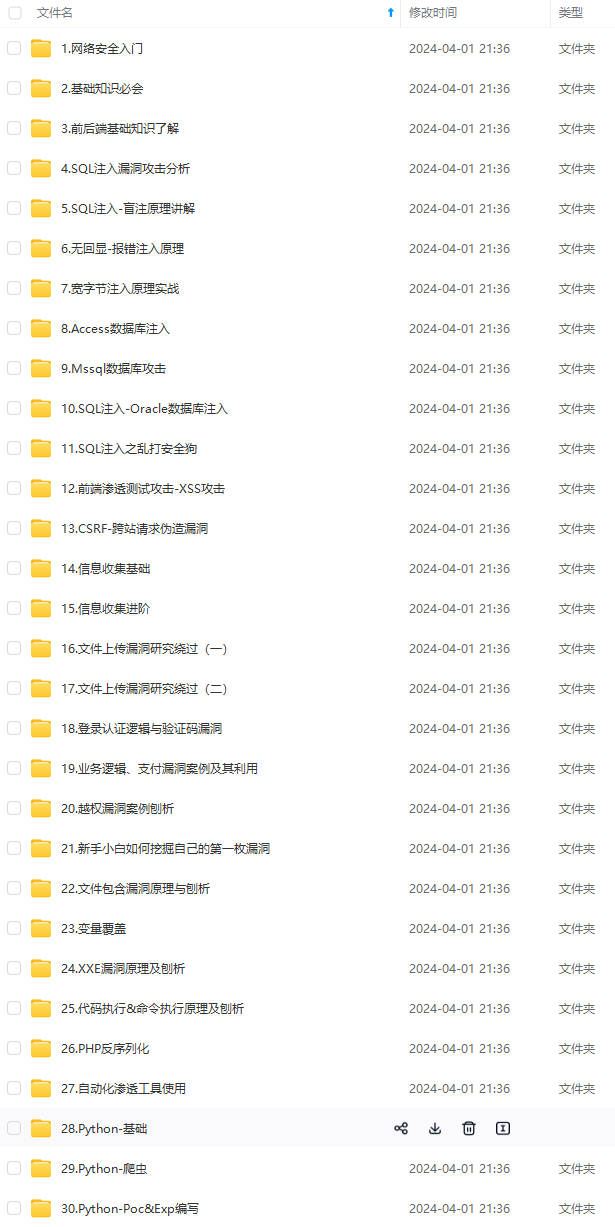
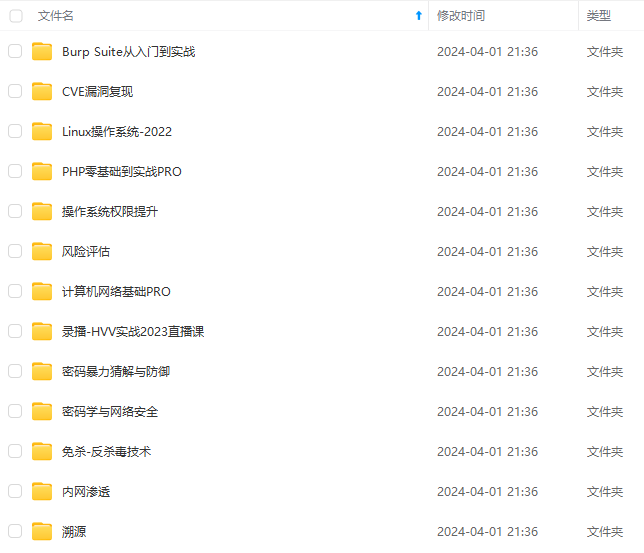
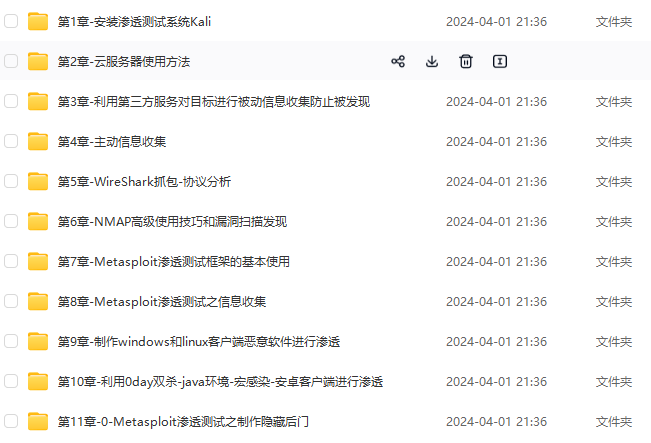
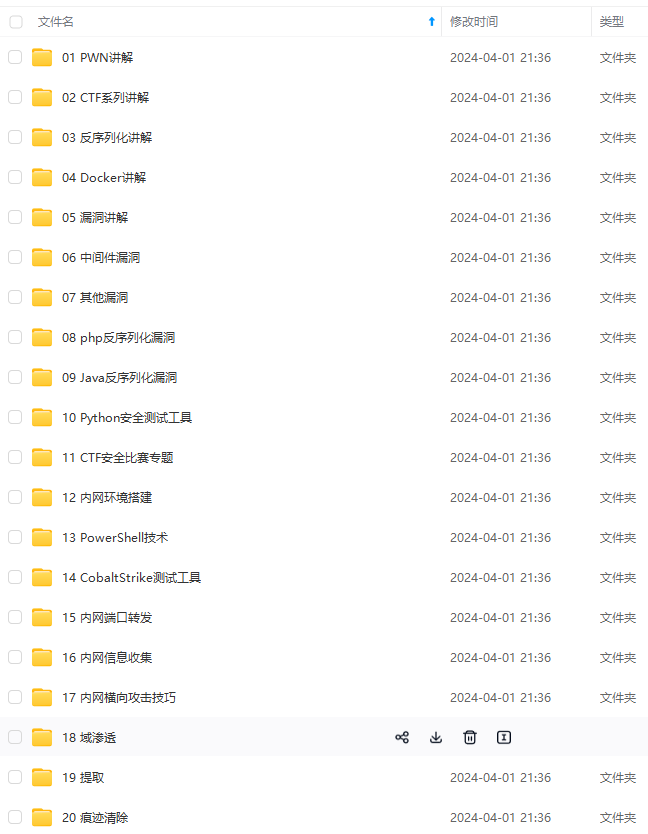
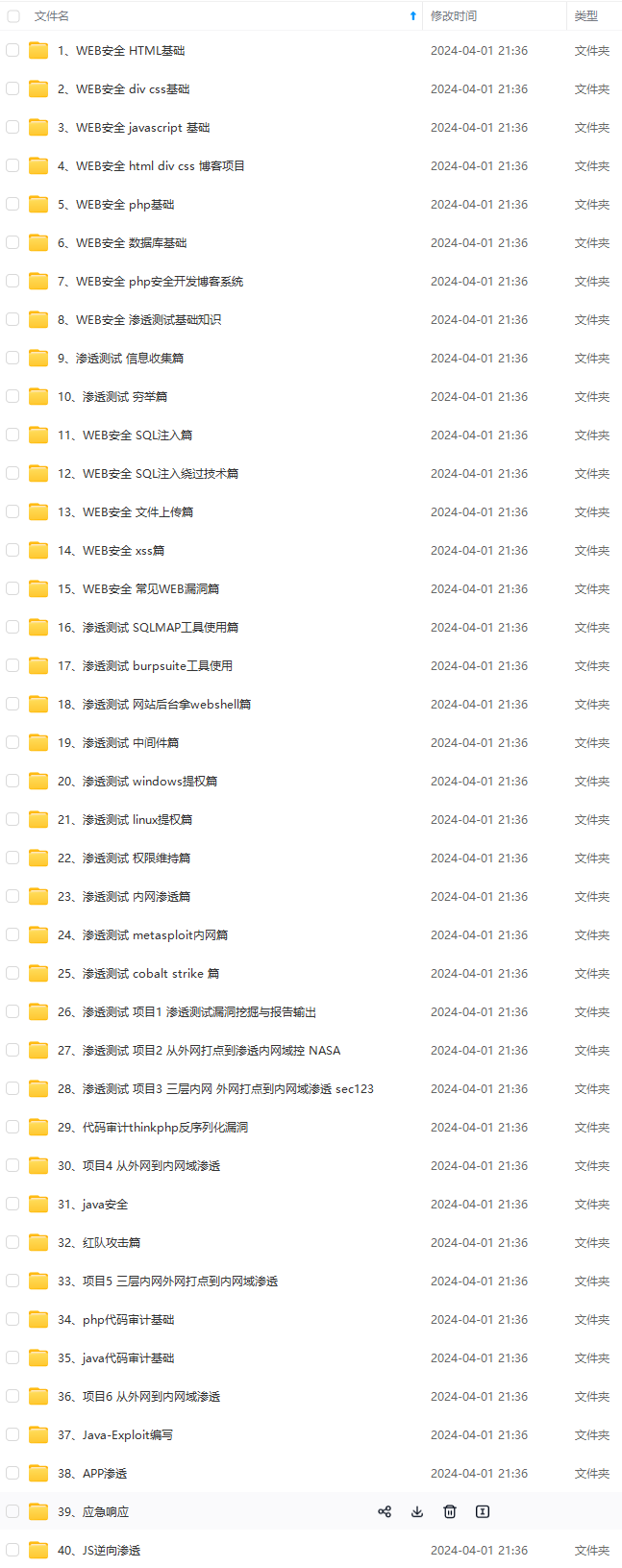
既有适合小白学习的零基础资料,也有适合3年以上经验的小伙伴深入学习提升的进阶课程,基本涵盖了95%以上网络安全知识点,真正体系化!
由于文件比较大,这里只是将部分目录大纲截图出来,每个节点里面都包含大厂面经、学习笔记、源码讲义、实战项目、讲解视频,并且后续会持续更新
如果你觉得这些内容对你有帮助,可以添加VX:vip204888 (备注网络安全获取)

学习路线:
这个方向初期比较容易入门一些,掌握一些基本技术,拿起各种现成的工具就可以开黑了。不过,要想从脚本小子变成黑客大神,这个方向越往后,需要学习和掌握的东西就会越来越多以下是网络渗透需要学习的内容:
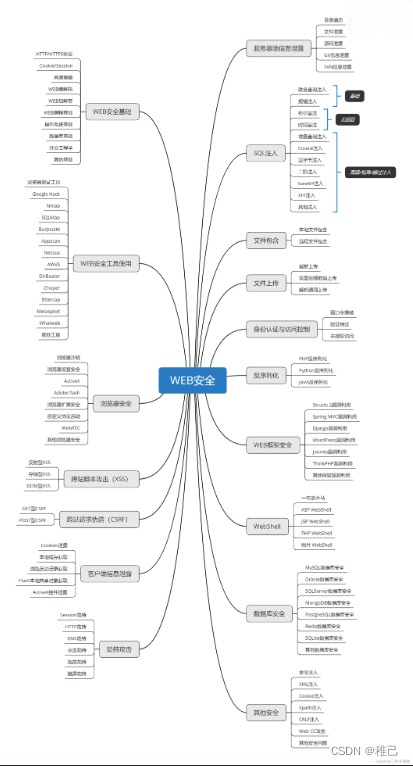
一个人可以走的很快,但一群人才能走的更远。不论你是正从事IT行业的老鸟或是对IT行业感兴趣的新人,都欢迎扫码加入我们的的圈子(技术交流、学习资源、职场吐槽、大厂内推、面试辅导),让我们一起学习成长!

果你觉得这些内容对你有帮助,可以添加VX:vip204888 (备注网络安全获取)**
[外链图片转存中…(img-88RlQq4t-1712926926063)]
学习路线:
这个方向初期比较容易入门一些,掌握一些基本技术,拿起各种现成的工具就可以开黑了。不过,要想从脚本小子变成黑客大神,这个方向越往后,需要学习和掌握的东西就会越来越多以下是网络渗透需要学习的内容:

一个人可以走的很快,但一群人才能走的更远。不论你是正从事IT行业的老鸟或是对IT行业感兴趣的新人,都欢迎扫码加入我们的的圈子(技术交流、学习资源、职场吐槽、大厂内推、面试辅导),让我们一起学习成长!
[外链图片转存中…(img-FG4Fgdb6-1712926926063)]





















 1万+
1万+











 被折叠的 条评论
为什么被折叠?
被折叠的 条评论
为什么被折叠?








